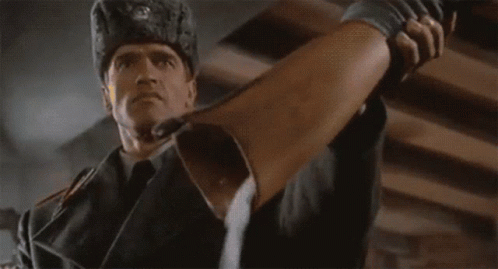Asking because of Air India 171. Pilots and their unions are objecting to it because of “privacy” reasons. What do you think about it?
In cab recording is becoming increasingly common in some industries. For instance, the US trucking industry.
I would argue that the effectiveness depends a lot on the goals and attitude behind it. If the goal is to penalize the operator (driver/pilot/engineer/etc.) for every single infraction then it’s just a huge waste of money. If the goal is to retain the best operators and help build a culture of safety then I can potentially see some value there.
Its brought in for safety reasons, all very valid and worthwhile, and 2 weeks later theyre watching the cameras live and giving pilots disciplinary meetings for drinking water on company time.
Exactly, I’m torn on this because as a privacy advocate it’s a nightmare, but for safety reasons I think it might be helpful. I think that if the video recording is solely for the FAA to look at in the event of a crash like a black box, and not the employer, then maybe? There was an article recently about retail employees having to wear cameras and I thought that sounded like a disaster. It’s super dystopian having to wear a camera so that big brother can watch you and make sure you’re doing every little thing correctly at your job. If the company has access I have the feeling that’s exactly what it would be used for.
retain best operators
That is pretty much the exact same attitude that will make people hate it and try to cheat and what not.
Does it matter which pilot flipped the switch though? The switches got flipped, maybe intentionally, maybe by accident. They already know when they got flipped, and have the audio of what they were doing at the time. So they can probably figure if it was possibly related to a procedure in progress. That’s about all they need. At best you might get evidence that it was intentional, which won’t save any lives, and will likely make people feel even worse.
Yes, because if you can figure out which part of the procedure broke down leading to that switch being flipped, you can figure out ways to prevent that from happening again. That’s much harder to do with just audio.
I’m not convince that requires video. Don’t they communicate out loud what they are doing so the other person knows? And if it was a mistake, what switch should they have hit that wasn’t recorded as being hit. They gotta do all that anyway.
What are you working as? No need to answer. Everyone knows for themselves. Now imagine if you’re constantly being recorded while on duty, every single critical step you make in your job. Even knowing nobody is gonna watch the footage unless there’s an accident.
In my opinion it adds a stress factor, and as someone who had terrible health consequences of growing up under constant stress, I’d most likely refuse to work somewhere, where I’m being recorded.
MentourPilot has outlined some possibilities though. Out of all ideas of applications in the cockpit, probably the best is when the interaction with instruments are recorded, not the entire cockpit. But then I’m not sure how useful that is. Yes, in this particular accident involving AI171 it would be absolutely crucial. But in other accidents? Every accident is different. The FDR already records the state of instruments. It’s highly unlikely that in other accidents such a footage would be useful. On the other hand, I find it likely that in other accidents other camera angles would be needed, which aren’t recorded.
It’s a really tough choice. Yes, safety first, but… pilots are humans too. We should rather do everything we can for them to not have any reason to do anything malicious, no matter if it’s accidental or deliberate. Prefer their mental health, their well being, their training, their work-life balance.
Yeah just put cameras aimed on the instrument clusters. Or maybe like body cams for the pilots. That way they can pick their nose and scratch their balls or labia in relative peace, but you still get that important data about how a pilot error gets made.
I don’t really see how this is a privacy thing. They’re on the job, what’s so private about that? Plenty of people are under video surveillance on the job.
That doesn’t make it not a privacy thing.
In many countries employers are not allowed to just arbitrarily video surveil you.
Plenty of people are under video surveillance on the job.
I hear plenty of people get shot in America every day (on average, it’s more than one mass shooting a day). By your logic, it should then be legal, as it’s a bad thing happening to plenty of people.
Video surveillance at work is wrong for the same reasons open-plan offices are sexist.
Video surveillance at work personally makes me feel more safe at work. If something happens, the police have a bigger chance to find the guilty party.
And I know that the only reason it would ever be used against me, is if i do something very very stupid and/or wrong.
the question is too broad. should cameras be in cockpits? yes.
should video streams of those cameras be available live? no.
should recordings of the cockpit be stored on the blackboxes? yes
should the footage be wiped between each flight? yes.
pilots have far too much on their minds while flying a plane, no reason to allow a micromanaging ego trip of an executive access to their cockpit to provide unhelpful “critiques” for better flights. let the talent do what you hired them for and take appropriate action after the incident with the supplied evidence.
should the footage be wiped between each flight? yes.
Unfortunately that’s not how it would work, current FDR data already isn’t wiped between flights, and has been used in the past to discipline crew members.
The issue with that is that when the blame game starts, people inherently try to hide stuff rather than admit fault and work towards a solution.
So where do you draw the line? Should everyone always have a camera pointed at them for “safety”?
I think I was pretty clear on where I draw the line.
thank god I’m not the FAA, right?
I think I was pretty clear on where I draw the line.
That’s the joke: You weren’t. You listed some examples that show you’ve set an arbitrary line, but you weren’t clear on where it was.
I don’t know… You sure seem to have the personality for it!
Yes, 100%. Storage shouldn’t be a problem in this day and age on multi-million dollar vehicles. And the privacy issue could be worked around too, like video recordings only accessible offline or upon pilots consent, unless there’s an accident and it’s requested by the investigators. I might be ignorant with this, but I don’t see the problem really.
No, because flight recorders already save large amounts of information about what the plane is doing, the pilot inputs, and what is being said audibly. I’d like to understand how a visual that vastly increases the storage requirements would help understand an event.
vastly increases the storage requirements
A couple terabytes of SSDs is a trivial expense on a commercial aircraft in 2025.
vastly increases the storage requirements
A couple terabytes of SSDs is a trivial expense on a commercial aircraft in 2025.
I hear a similar argument daily – that the consumer no-RAID stuff is so cheap and thus storage should be cheap. The stuff you get on the shelf isn’t valuable here as it wouldn’t survive a crash. The consumer stuff would die quickly just from the brutal power-blips the system undergoes just as part of regular flight operations and power-source switching.
It could cost a hundred times as much and we’re still only in the fifth digit of the airplane’s nine-digit price tag.
You wouldn’t want this video stored on traditional SSDs though. You want it stored on media in a black box like the voice & data recorders so that it can survive crashes, fires, etc. Not sure what the costs associated with that would be though…
I’ll leave the implementation details to the experts, but I’m sure there is a suitable option for storing 24 hours of video that adds only a negligible amount to the cost of a quarter-billion dollar airplane like the 787.
Again, negligible
I think you’re probably vastly overestimating how much increasing the storage on a flight recorder would cost.
Even magnetic storage has vastly dropped in price over the years, it’s just become less common.
Agree with your overall point, but in this Air India case a visual definitely would help to see which pilot (if any) flicked those switches to off. The audio is ambiguous.
Wouldn’t the state of the switches be logged on the flight recorder?
Yes, but it might be very important to determine: did the pilot/copilot flick the switch, or did the switch change state without user input?
Is the crew at fault (training issue/operator error) or is the manufacturer at fault (design flaw) or was the ground crew at fault (improper maintenance)?
A camera could help determine that, if it had the right field of view.
Mechanical switches aren’t flipping themselves 4 seconds apart
No, but a short circuit might
it is, mentour pilot released a video about the preliminary report the other day where it’s mentioned that the fuel pumps were set back to active with a 4 second delay between flipping each switch.
this link should be set to the time stamp where he goes over what happened with the switches: https://youtu.be/lVS76zcpZok?t=1102
Frame rate doesn’t necessarily have to be high. Idk how the black boxes on airplanes work, but surely storage options have increased a lot since their invention, right?
They’re basically several terabytes of memory cards with a really really really good casing, locator beacon and a big battery.
Storage has improved hugely, but they also went from storing a hundred parameters once per second to storing a few hundred thousand parameters in pretty much realtime. Dozens of terabytes of data is already going in there.
On the other hand, we can basically realtime encode video nowadays, so I don’t see why another 100gb would be a problem.
The concern here is storage requirements?
Having no visual is a huge disadvantage. You miss a great deal of context.
A camera wouldn’t have prevented anything, it would only make blame slightly easier.
Maybe improved mental health resources for pilots would be more helpful.
Or maybe not having a single point of failure for something so critical. Airplane engines are made to burn for a while before they become a problem, so why can’t a two engine shutdown be inhibited below a certain radar altitude, or something of that nature?
Seems like a lot of pretty easy fixes that would work preemptively, rather than just another $20 part marked up to $20,000 because it comes with a FAA part number, that can only be used to assign blame after the fact.
Let me ask everyone this, would you want a camera in your office? Or should nurses have to wear body cameras all shift just so if something happens to a patient they can make sure they can blame the correct person?
it would only make blame slightly easier
If anything other than an intentional act by ones of the pilots is to blame, then that’s pretty useful. If the switches malfunctioned or there’s a way to actuate them accidentally, that’s a design flaw in the aircraft.
I get what you’re saying, but how many thousands of cycles do you think the 787 has on it for this to be the first time they failed, and for two separate switches to fail seconds apart?
Accident investigators are very good at what they do, and I will be willing to bet they will be able to narrow it down to an actual cause, even without a camera.
I’ll wait for those very good accident investigators to release a conclusion before I speculate too much about how it happened. Maybe they’ll have a conclusive answer based on other evidence, but if they don’t, it’s easy to imagine how a video could have helped.
A camera wouldn’t have prevented anything, it would only make blame slightly easier.
Blame isn’t necessarily the important thing for the outcome of an investigation. It is important to determine fault for the sake of preventing future failures. Did the crew flip the wrong switch, or did the system change state without the crew doing anything? Is there a training issue, or an overwork issue, or design flaw, or a maintenance problem?
You can’t answer these questions without knowing the sequence of events prior to the failure, and the flight recorder data that shows a system state change might not be enough if you can’t determine how or why that change happened.
My understanding is that we already know that information, we have the technology to know when the switch is moved, not just when the system acts as if the switch is moved.
I can’t imagine the fuel cutoff switches aren’t monitored, and if they aren’t that’s something that should already exist.
Once again, I will point out, and I really hope I’m not jinxing it, but the USA doesn’t have cockpit cameras, and even still has a pretty exceptional safety record.
And I understand blame is not the intent, but pardon me if I don’t believe that information won’t be used against the crew. This pretty much killed single pilot operations, so now the other solution is to put the crews under a magnifying glass until you can find more problems you can use.
It doesn’t prevent anything in the moment. It serves as an investigation tool and learning tool after the fact. And that is the real prevention tool. We don’t have to rely on cockpit narration to know more about what’s going on beyond the instrumentation and controls.
What’s to learn? From this incident specifically.
That a pilot with a history of mental health issues most likely did it? What does that teach us? And what are we going to do about it?
Anything shy of treating it as a disability and retiring the pilot with full pay until their retirement age will result in people still hiding rather than looking for help when they need it.
The USA doesn’t have cockpit cameras and has a pretty exceptional safety record, so I’m not sure what anyone is hoping to achieve other than blame someone, which is entirely contradictory to safety.
You can’t make a case for something without the proof that something happened.
It is my understanding that it is known the switches were moved, not that there was a failure that reproduced the same effect.
Switches can be monitored meaning their position is known and recorded. Further the odds of them both failing, one second apart is almost zero. All signs point towards someone turned them off, and one of the pilots had a history of mental health issues. It’s not a guarantee, but the math seems to be adding up.
So why not have video evidence to be sure?
Pretty easy fix? There might be an emergency checklist somewhere that requires you to shut off engines. Testing the fuel cut off is part of the pre flight, at least for small airplanes. I see no reason why it wouldn’t be for larger airplanes.
Unless you’re type rated in the airframe or work for Boeing, I would refrain from offering simple fixes.
Also radar altitude? Do they not use pitot tubes for altitude?
Ohhhhhhh buddy you activated my trap card. I happen to have multiple type ratings, and I still consider myself far from an expert. However I do still hold a CFI so I’m going to try to teach you some stuff!
Every airplane that I’ve been required to have a type rating for has a radar altimeter. A lot of systems already use that information, from auto landings, to caution message inhibits, down to GLD spoilers. Watch any “landing an airliner” YouTube videos, I feel pretty safe in saying generally you will hear an audible “50, 40, 30, 20, 10”, that information is usually derived from the radar altimeter.
While you are correct, there are emergency checklists that do require engine shutdowns, there are very few that would require that to be done weight off wheels and under 1000ft AGL. Off the top of my head, the ditching (landing in water) checklist would, but that could be tied to a ditching switch, if equipped, which since I don’t have a 787 type, I don’t know if it does, but I would guess it probably does.
Seeing as you know what a pitot tube is I’m going to assume you at least have some interest in flying. The pitot tube is used for airspeed, what you’re probably thinking of is the other part of that system called the static port. That’s used for things like altitude and vertical speed.
Circling back to my “simple fix”, my current airframe has triple redundant hydraulics with dual redundant pumps for each. So for something that has that much redundancy, don’t you think something as critical as an engine should require more than one switch to shutdown, at least at an altitude of high vulnerability? Just food for thought.
Lmao didn’t know we were playing yugioh, but I will defer to the CFI over my checks credentials former student pilot knowledge.
Pitot tubes measure a plane’s airspeed. It’s static ports that measure barometric pressure. radar altitude directly measures the distance between the ground and the plane using radio waves is more useful on final approach
Are they mostly worried about audio? Because it really would make conversation on a four hour flight awkward if you knew everything was being recorded.
As for video, I feel like anything they don’t want me to see is something they shouldn’t be doing at work.
Audio is already a thing in most conmercial flights. The pilots unions tried use the same “privacy” concern many decades ago but fortunately/unfortunately (depending on your perspective) they failed.
Now the question that remains is: What about the cameras?
- Wait for the final report on Air India before taking any regulatory decisions.
- There’s no real technical limitation today on doing this to the safety-critical engineering standards that are demanded on the flight deck. The first CVRs were based on the old half inch tape technology, and they only recorded something like 20 minutes on a circular tape.
- Wait for the final report first; but exactly what additional information do you hope to get off the video feed that won’t be on the CVR + FDR? I am skeptical that this accident will not be “solvable” from the information that is available.
- If the regulators want to fight the pilot unions on this, they can. And they can probably win. Pilots don’t necessarily have a ton of leverage on this kind of issue.
In particular, I expect that the final report will contain a lot more analysis of FADEC telemetry from the FDR. That simply wasn’t analyzed in time for the preliminary report.
Privacy reasons? Now I’m wondering what really happens in the cockpit.

Just watching some videos on the tablet during cruise (with headphones plugged in so the Cockpit voice recorder doesn’t hear it)
Don’t worry about the white stains, its just… coffee creamer… or whatever… 😉
Yes and no.
Yes because these people are at work; if they’re not using a bathroom, having cameras recording them while they perform their job is within their employers purview to do.
The can object all they want, but it’s something that is, and can be done for pretty much everyone working. Think about cashier’s at grocery stores and convenience stores… They’re almost always on camera all the time. I can hear someone saying “but that’s different, it’s for security”… Is it?
Having a flight recording of what the cockpit is doing during the flight, seems like something you would want when you are entrusting them with a multimillion dollar piece of machinery and hundreds of people’s lives.
On the other hand, where the hell is that information going to go? The black box? Doubtful, that shit is already cram packed with stuff they need to record. On a device in the cockpit? Sure, you’ll never find it in a crash, but you do you, I guess.
So I’m on the no side because unless you’re putting it in the flight recorder, it’s borderline useless for anything beyond scrutinizing someone doing their job. If you are putting it in the flight recorder, is there any information that’s going to get left out to make space for the video of pilots picking their noses at 30,000 ft?
No. For what? Occasional and slight benefit to some subset of accident investigations?
Pilots deal with more than enough bullshit. Putting them on camera is outrageous.
Why is audio okay, but video is where the line is drawn?
Audio is well established. Video is not, therefore drawing a line before it’s actually happening makes sense.
Also it’s practically the last possible piece of privacy for pilots.
Also it’s not been demonstrated that the significant investment in cameras, video processing, video storage, and making said video processing and storage fast enough and physically robust enough to survive crashing, is actually worthwhile.










